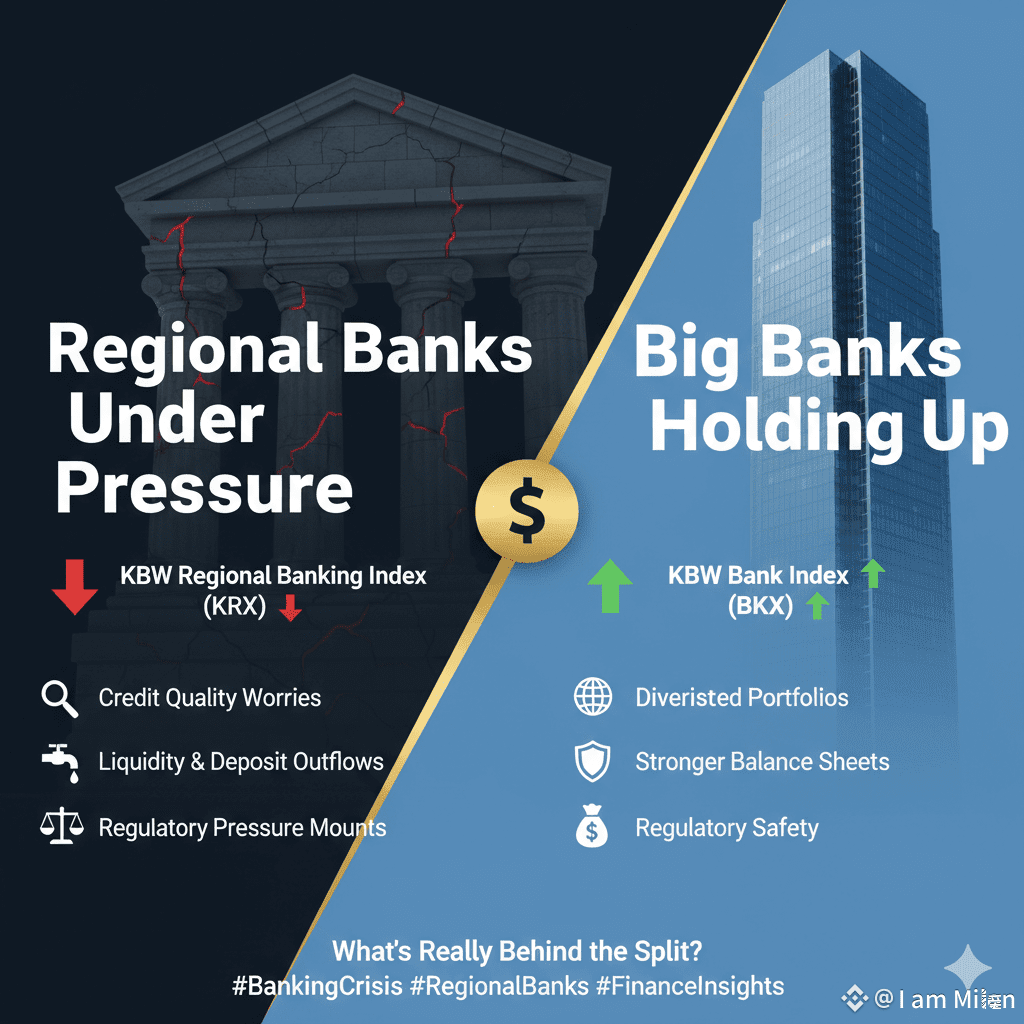The gap between the KBW Regional Banking Index (KRX) and the KBW Bank Index (BKX) is widening — and investors are paying close attention. While big U.S. banks are holding up strong, regional players are showing signs of stress. Let’s break down what’s really happening 👇
🔍 1. Big Banks vs. Regional Banks
The BKX Index tracks large, national banks — institutions with global operations, diversified portfolios, and stronger balance sheets.
Meanwhile, the KRX Index focuses on regional and mid-sized banks that rely more on local lending, commercial real estate (CRE), and deposit stability.
That makes them far more sensitive to interest rate swings and economic slowdowns.
⚠️ 2. Credit Quality Worries
Investors are increasingly concerned about credit risk in regional banks’ CRE exposure.
With office vacancies still high and refinancing costs climbing, loan defaults could rise — and that’s starting to show in higher delinquency rates.
If these trends continue, regional banks might face loan write-downs and tighter balance sheets ahead.
💧 3. Liquidity and Deposit Outflows
Since several mid-sized banks collapsed in 2023, deposit competition has intensified.
Customers are moving money into money market funds and large banks offering better returns.
This exodus has squeezed margins, raising the cost of liquidity for smaller lenders and hitting profits hard.
🏛️ 4. Regulatory Pressure Mounts
Regulators are stepping in with calls for stronger liquidity buffers and higher capital requirements for mid-tier banks.
Credit agencies have also turned cautious, with negative outlooks on multiple regional institutions — adding another layer of stress for investors.
🏦 5. Why Big Banks Are Holding Up
Major banks are faring better, thanks to their diversified income streams — from investment banking to wealth management.
That’s why the BKX Index has remained relatively stable, showing investors’ preference for scale, diversification, and regulatory safety.
📊 6. What’s Next for Regional Banks?
Analysts expect a slow recovery phase as regional banks juggle rising funding costs, lower loan demand, and regulatory headwinds.
Still, for long-term investors, there could be value opportunities once the dust settles — but the risk/reward balance remains delicate.
Key factors to watch:
🔺 Federal Reserve’s rate path
🏢 CRE market health
💰 Deposit stability trend.
🧭 Final Takeaway
The slump in the KRX Index isn’t just a blip — it reflects deep structural challenges facing regional U.S. banks.
Until confidence in credit quality and liquidity resilience returns, the pressure is likely to persist — keeping big banks firmly in control of the financial narrative.
#BankingCrisis #RegionalBanks #FinanceInsights #MarketUpdate #InvestSmart